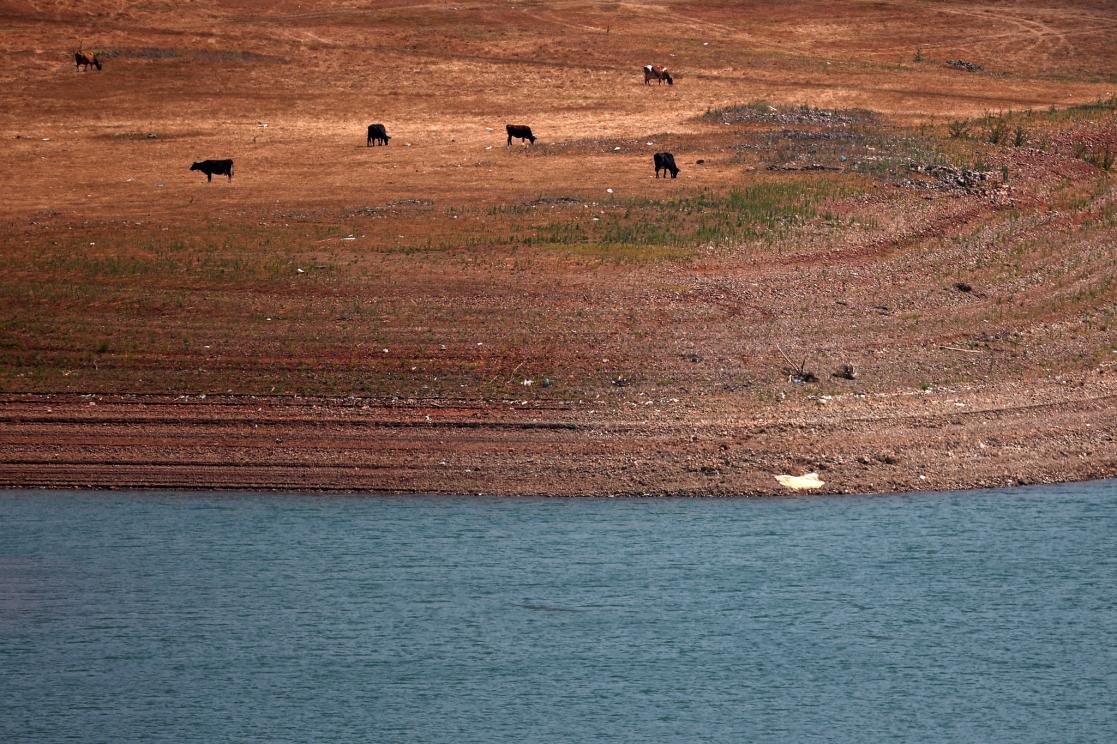As a child, Besart Halilaj lived in the mountains, and lived with the mountains. Born and raised near Mount Gjallica in Kukës, where more than 3,500 species of plants grow, he developed a deep connection with nature. There, vegetables and fruits were cultivated; there, he played football with his peers; there, the livestock grazed; and there, their food was secured for the winter. While making memories, he was also discovering his path to the future.
Later, he decided to study Aquaculture in Tirana, forging a new bond with nature through water. Upon returning to his hometown, Halilaj began studying mountain streams and rivers, gradually becoming a nature ambassador, recycling waste and old car tyres, building retaining walls with them, and volunteering to clean up rivers and mountains.
When the EU-supported project ReLOaD opened a call for the training and certification of cultural guides, he saw an opportunity for the next step. “I was already involved in environmental and cultural initiatives. Before certification, we visited cultural sites across Albania, and this helped me get to know my country better, from its roots and beginnings to its highest peaks. I could see how everything was connected to nature,” he recalls.
As a local guide, his life and work blend culture, traditions, trails, castles, plants, streams, lakes, waterfalls, alpine meadows, caves, and all the legends that come with them. “This is the Vana Gorge, between Mount Koritnik and Mount Gjallica in Kukës, named after the ‘late hours’. It was once believed that no one could pass through here at night because the spirits and fairies ruled the darkness. Nearby is Jezina Cave, five kilometres deep, filled with stalactites and stalagmites. The area is renowned for its cattle stables but also has a rich history dating back centuries, linked to the Via Egnatia through the Lissus-Nissus road and Peca Castle,” he explains, as he shows the trails he has marked as part of the Eco-Tourism Routes in the Cross-Border Area for the Promotion of Alternative Tourism project.
This EU-supported initiative aims to revitalize and expand the region’s tourism offer by highlighting natural and cultural routes and promoting remote villages with an extensive natural, historical, and cultural heritage.
“The trails begin at Vana’s Gorge, a natural monument near Bele Waterfall, in the heart of the Koritnik-Korab National Park. They pass through a native pine forest and, near Zbinec Pass, branch into three directions: one towards Perbreg village and Old Kukës, another towards Morin, and the third to Dragash. Years ago, a Balkan lynx was caught on camera here. These trails were also used by caravans of people fleeing the Kosovo war,” he explains.
Before the trails were marked, this area was inaccessible to tourists. “The project allowed us to identify, mark, and include these three trails on digital maps, turning an unexplored area into a priority tourist zone for future projects. It also increased the number of visitors who, thanks to outdoor programmes, now know the area is ready to explore,” says Halilaj. He notes that since the marking was completed, tourist visits have increased even without guides, which benefits the local economy, particularly through the sale of dairy products.
“As the area is also home to cattle stables, we are working to include in tourist visits the vertical transhumance of animals — the traditional seasonal movement from villages to mountain huts in spring and autumn,” says Halilaj, carrying on the passion for an ancient ritual that still lives with the mountains.
Beyond Topojan and Bele, villages like Novosejë and Shishtavec are located in the more remote areas of Kukës. Through the EU-supported “Build Together an Attractive and Prosperous Region” project, which contributes to sustainable tourism development in the cross-border areas of Shishtavec and Dragash, infrastructure such as roads and wooden fences has been built to improve living conditions for local residents. An Adventure Park has also been created, as part of the Eco Routes initiative, overlooking a breathtaking landscape of alpine pastures, valleys, deep gorges, glacial lakes, plateaus, and Mount Kallabaku. Within this area lies the Path of Colours, famed for its multicoloured flowers and herds of wild horses.
By enriching the region’s natural and cultural heritage and emphasising the authenticity, beauty, and uniqueness of the territory, Eco Routes contributes to the revival of villages and landscapes. This is a park where wild boars dig for truffles, shepherds continue the tradition of vertical transhumance, and where wolves, Balkan lynxes, deer, bears, and a rich variety of wildlife maintain the balance of the food chain.
“There was a time when wolves were hunted, reducing their population. This caused an increase in the wild boar population, creating an ecological imbalance and problems for the nearby villages,” says Halilaj, highlighting the vital role that every species plays in the ecosystem of this park, known as the ‘roof’ of Albania.

